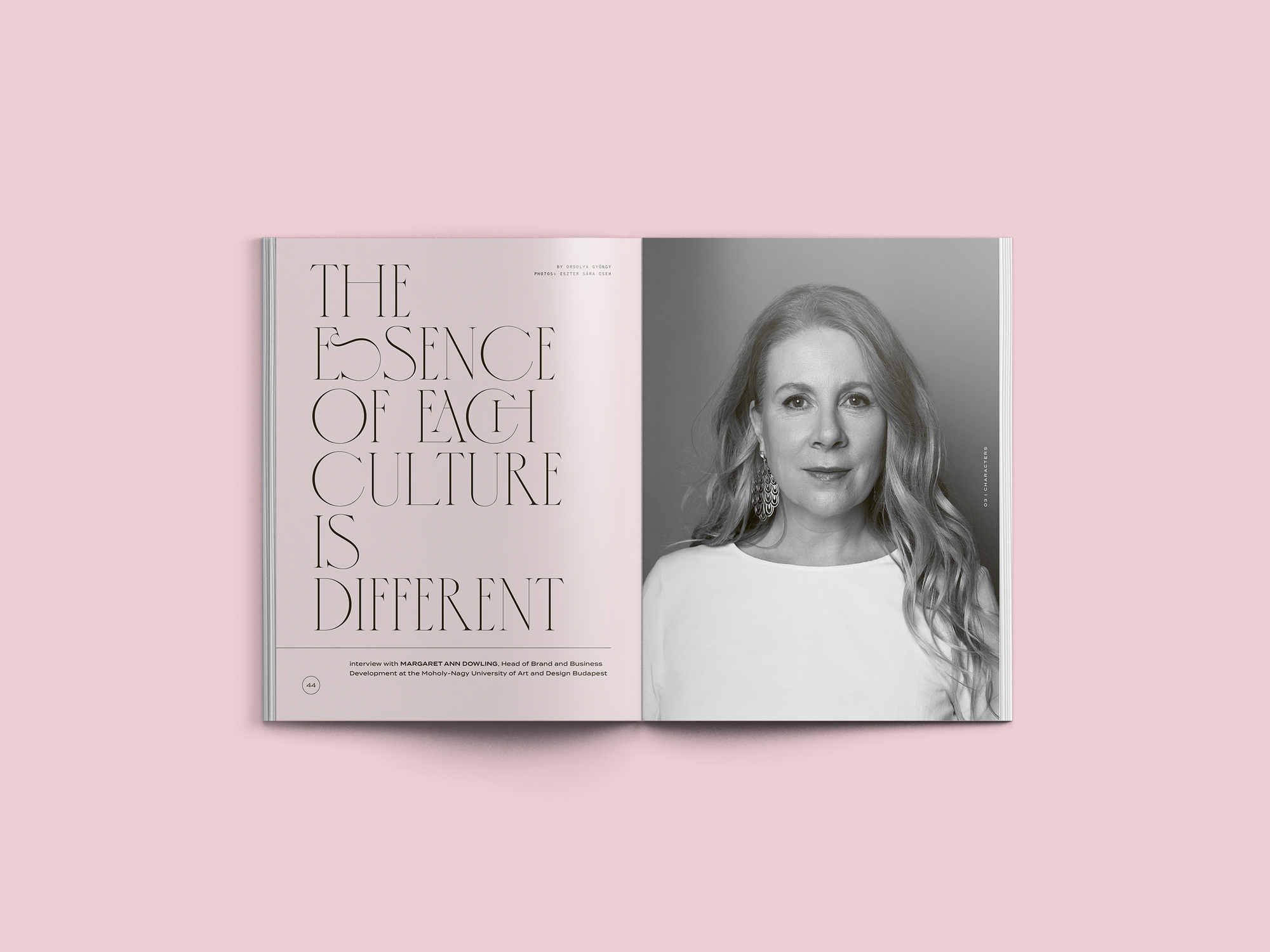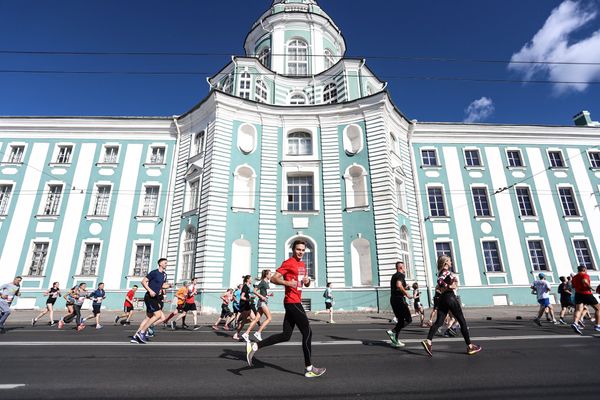An Irish government initiative called The European Orientation Program sent a young Margaret Ann Dowling to Hungary with the mission of helping to build Irish brands abroad. “In the interview, I was asked: Belgium, Spain or Hungary?” she recalls. After having lived in Belgium as a child and not being especially interested in Spain, she chose the place she did not know at all: Hungary. On November 8, 1992, she started the program in Pásztó, experiencing a profound culture shock. “I was a city girl. It was definitely a surprise. Chickens on the road!” she remembers. But that didn’t stop her from spending the next almost thirty years in East-Central Europe, mainly in Hungary. We asked her about the last two decades of the region, and Hungary in particular, with a focus on the relationship between embracing one’s cultural identity and economic development. This interview was published in print in Hype&Hyper 2021/1.
Having lived and worked in three countries of the region, Margaret Ann has a much fuller understanding of the differences between the region’s countries. In Hungary, she spent years at media companies such as the Budapest Business Journal, Sanoma Media Budapest and Marquard Media Hungary after also spending time with Hubert Burda Media in Poland and Czech Republic. Recently, she became Head of Brand and Business Development of the Moholy-Nagy University of Art and Design Budapest. Margaret Ann got to know not only the economic operations of the region but also the different mindsets in countries of the Central European region. Especially, in Poland and Hungary, where she spent most of her time. These two are more interrelated than we might first think.

H&H: Economist Mike O’Sullivan recently stated that the era of globalisation is over. According to him, from now on, countries will form alliances not primarily on the basis of geographic location but their shared system of values. Do you think that the region of East-Central Europe is tied together by a common set of values on which we can build?
M. A. D.: I have two answers to that. The common history and past have, of course, left their impression on the Central European mindset encouraging people to see the region as a unit. In some respect this may be obvious strategically, maybe politically also. However, business success stems from recognizing differentiation, especially since thinking individually about our own creative nature can help build the economy of individual countries.
If we want to differentiate and build our society based on our own cultural values, then we need to understand where we are different. We need to understand, and we need to play to the strengths that we have as compared to other countries. This is especially true in the fields of innovation and design.
People in general must really understand their own culture, and make sure that the cultural values, which are intrinsic to their country, are shared with the next generation. Having spent a lot of time in Poland, Czech Republic and Hungary, in my subjective opinion there is a significant difference between the mindsets of people and their attitudes to certain things. From a business point of view as well as from a cultural aspect.
Can we say that discovering and utilising this cultural identity might be the key to business success or, in a broader context, the success of a country?
I think that building a concept of cultural identity is very important in terms of creating intellectual property and understanding what we bring to the design space that’s different from the rest. That would be very much a fundamental part of moving out of the commodity space and into the idea of brands, building something that has implicit design value that goes beyond the mere commodity nature of a product or service. There’s always going to be someone who’s cheaper. But the question is: is there going to be someone who’s better?
If we understand what our brand equity is as a country and what our differentiator is in terms of the country’s future goals, or the future of design, then we can position ourselves effectively. One has to be familiar with the desired value set, and how each country represents those unique attributes that are different from others.

Based on your experience and insight, where do regional countries stand in this process of self-identification currently, and how does this affect the market?
This also depends on the market size of a given country. Starting with the Poles, they can basically live in an ecosystem that’s exclusively Polish. They don’t necessarily have to rely on tourism, their market size enables them to concentrate on their internal economy. They don’t have to worry so much about how they’re perceived, they can be Polish for Polish purposes only.
In the case of the Czechs, I see that they have a very clear understanding of their nature, their attitude toward arts and how they position businesses in terms of importance. They also have a high level of cultural awareness and pride, which may be due to the fact that the Czech Republic is perceived to be one of the best places to go in Central Europe as a tourist destination. If you’re traveling from Asia, for example, it’s Vienna, Prague, Paris and London.
To do well in Hungary, given the dynamics of the Hungarian market, means a company can expand to any other market and do brilliantly, because just to survive here requires a high level of tenacity, ingenuity and innovation. If you take the same standard and apply it to any other market, where it’s easier, meaning that the barriers to entry are lower and the market size is bigger, then you’re going to do very well. Hungarians should be proud of their achievements.
Thinking back to the 90’s it was much harder to convince people to invest in Poland, because it just wasn’t a very welcoming place. The bureaucracy was and still is very complex, and many other issues made it difficult as well. Despite this Poland was perceived to be a big opportunity due its market size but Hungary got a significantly larger amount of foreign investment because it was a nicer place to do business.
Now the question is how much that distorted the need for natural Hungarian innovation? Meaning, if there were less foreign direct investment at the time, would Hungary have become more autonomous and self-confident in its own way of innovation? I think Polish economy had 10 or 15 years of figuring out what it meant to be a Polish entrepreneur, but in Hungary, such a large amount of foreign direct capital came in that entrepreneurship was less of a pressing need, because between the early ’90s and early 2000s, a lot of people were working for international companies. I think the advantage of this time was a high level of cultural diversity in the business ecosystem. The resonants of which remain today.
How did the region change in the past years? Can we talk about rapid economic growth, or can we expect it in the near future?
I think that the Poles have strengthened their position, especially in e-commerce. They were also the first with mobile payments, they’re very strong with call centres and shared service centres. They’re the largest market in Central Europe: they can attract a lot of attention because of the size of their market. Everybody wants to trade with them. They’re excellent at self-promotion as well; much more than Hungarians are.
I believe that Hungary still has significant untapped potential and should work to formalise the idea that Hungary is a great place to set up a Central European headquarter. We can’t underestimate the importance of bringing in know-how, high-paid jobs and creating more interactions for the next generation, so that they are surrounded by more impulses from international companies. In parallel, we need to work in building awareness of Hungary as a centre for innovation, so that Hungarian companies can be supported in their internationalization.
Regarding the pace of development, Central European markets don’t have embedded historical precedents and are not wedded to old business models like many Western European countries are, so new business models can be designed and adapted to very quickly. Thinking about the future growth potentials for Hungarian service, software or manufacturing companies, the European digital single market comes to mind as the next big opportunity. Companies have the benefits of the Hungarian market concerning the costs, agility, the mindset of innovation, without having the limitations of the market in terms of only the local consumer. The ability to be agile and to be quick is an advantage, and the ability to spot gaps in the market should not be limited to what we see in Budapest, but what we see around the region in Europe and in general.
The broader European marketplace, in my opinion, is a great opportunity for countries like Hungary to create a sustainable connection with customers beyond borders, because it’s possible to use all forms of technology to maintain contact with customers. With drop shipping models, the evolution of production and demand, new approaches are possible. One doesn’t need to rent a store with foot traffic anymore, one can have a virtual shop front, and if you can reach out to your customers around the world, maintain communication with them, then you don’t need a physical footprint but a digital one.
I also believe that Hungary has a very high level of authenticity and historical presence in the world of design and innovation. At the Moholy-Nagy University of Art and Design in Budapest it is our ambition to support innovation and design in the region.
Time after time we turn back to the topic of identity and attitude: recognising our own values and employing them. Maybe the most common stereotype associated with Hungarians is that they don’t have enough self-confidence. This problem is present both on an individual and on a social level.
I come from a small culture as well, so I can say I have empathy for the dilemma. I believe the answer starts with the individual and then goes on to encompass individuals’ families, neighbours, village, and town right out to the border and into the world at large. I don’t think communism did any favours for people’s self-worth. In that 50 years, surrounding countries in Europe were building their self-esteem around their national heritage and values. Hungary has some catching up to do. It is important to recognise and understand what it means to be Hungarian as well as figure out who you want to be? What one’s values are? Maybe there was no real opportunity to do this in the ’90s, when suddenly everything became either American or European. There was no space or demand on products to be explicitly Hungarian. However, there is no time like the present and the future is in surplus. In my opinion, Hungary as a center for innovation and design has a bright future. This is a unique moment to really embrace the creative spirit of the Hungarian mindset and to share it with the broader world at large. I look forward to seeing what happens in the next 30 years.
Photos: Eszter Sára Cseh

Prefer to read it in print? Order the first issue of Hype&Hyper magazine from our online Store!

Incredible marathons in Eastern Europe | TOP 5

Joanna Wzorek: postcards from Poland










